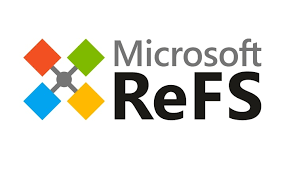
ReFS Overview
ReFS, aka "The Resilient FileSystem" is Microsoft's newest file system (codenamed "Protogon"), designed to maximize data availability, scale efficiently to large data sets across diverse workloads, and provide data integrity by means of resiliency to corruption.
The first release of ReFS file system were introduced in 2012 in Windows Server 2012.
The technology now is included in Windows 8 & 10, where it can only be used as a part of the Storage Spaces feature for a disk pool. ReFS has been enhanced for Windows Server 2016 and is a part of Windows 10 Pro for workstations.
ReFS - is a fault-tolerant technology that came to replace NTFS. Was designed to eliminate the shortcomings of the predecessor and reduce the amount of information that may be lost during various operations. Supports working with large files.
Max. volume size: 1 yobibyte (280 bytes)
Max. file size: 16 exbibytes (264−1 bytes)
So, one of the advantages of the technology is high data protection from corruption. The drive contains checksums (and metadata) designed to determine the integrity of the data on the partitions. The control occurs during read/write operations and immediately detects corrupted files.
Abbreviation for Resilient File System, ReFS is a file system created with source codes of the latest versions of NTFS. ReFS is not just a replacement for NTFS at the moment. It has its advantages and disadvantages. You cannot just use ReFS instead of NTFS on your system drive. Since ReFS is Microsoft's newest file system, it is designed to solve several major problems with NTFS. ReFS is more resistant to data corruption, work better with certain workloads and scaled better for very large file systems. Let's see what exactly this means.
